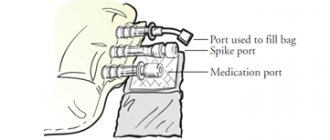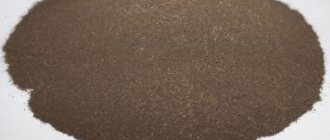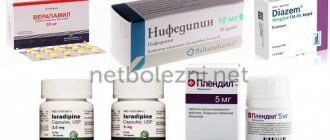Chemical properties
antibiotic of a number of sulfonamides, it is also called streptocide . It is one of the first representatives of this series of antibacterial agents. Has a wide spectrum of antimicrobial activity.
The medicine is synthesized in the form of a white crystalline powder, without a specific odor, bitter taste, the aftertaste of the powder is sweet. The substance dissolves well in boiling water, difficultly - in ethyl alcohol, soluble - in hydrochloric solution , caustic alkali , glycerin , acetone , propylene glycol . The product is insoluble in chloroform , ether , benzene , petroleum ether . The molecular weight of the compound is 172.2 grams per mole.
The antibiotic is also sold as sodium sulfonamide . It is a white powder, highly soluble in water. Practically insoluble in various organic solvents. Also available in tablet form.
Sulfanilamide preparations are mainly used externally, in the form of ointments, powders for external use, liniment, aerosols, and as part of vaginal suppositories. However, the medicine can also be taken orally.
Instructions for use of sulfonamides
Antibacterial agents are prescribed both internally and locally. The instructions for the use of sulfonamides state that children will use the drug: up to a year, 0.05 g, from 2 to 5 years - 0.3 g, from 6 to 12 years - 0.6 g for the entire dose. Adults take 0.6 -1.2 g 5-6 times a day. The duration of treatment depends on the severity of the pathology and is prescribed by a doctor. According to the annotation, the course lasts no more than 7 days. Any sulfonamide drug should be taken with an alkaline liquid and consumed foods that contain sulfur to maintain the urine reaction and prevent crystallization.
Pharmacodynamics and pharmacokinetics
Mechanism of action of the substance
The drug acts as an antagonist of para-aminobenzoic acid due to its chemical similarity to it. dihydropteroate synthetase is inhibited by a competitive mechanism. The processes of synthesis of dihydrofolic acid and tetrahydrofolic acid , which, in turn, are necessary for the formation of pyrimidines and purines , the growth and development of harmful microorganisms. Thus, the substance produces a bacteriostatic effect.
Antibiotics Sulfonamides are active against gram-positive and gram-negative cocci, streptococci, meningococci, pneumococci, gonococci, Vibrio cholerae, Bacillus anthracis, Yersinia pestis, Actinomyces israelii, Shigella spp., Clostridium perfringens, Corynebacterium diphtheriae, Chlamydia spp., Toxoplasma gond ii, Shigella spp. When used topically, it significantly accelerates wound healing.
After the substance enters the digestive tract, the maximum concentration of the drug in the blood is observed after 1-2 hours. The half-life is less than 8 hours. The product overcomes all histohematic barriers , including the BBB and the placental barrier. 4 hours after administration, the substance can be detected in the cerebrospinal fluid. Metabolized in the liver, metabolites do not have antibacterial properties. The antibiotic is excreted mainly through the kidneys (up to 95%).
The medicine has not been studied for mutagenic and carcinogenic effects on the body.
Indications for use of Sulfanilamide
The antibiotic is used locally:
- for the treatment of tonsillitis ;
- for ulcers , cracks and infected wounds of various origins;
- in patients with purulent-inflammatory skin lesions;
- for boils , carbuncles , pyoderma ;
- patients with folliculitis , with erysipelas, with acne ;
- with impetigo ;
- for the treatment of first and second degree burns.
At the moment, the drug is practically not used for oral administration. Previously, it was used in the treatment of tonsillitis , erysipelas , pyelitis , cystitis , enterocolitis , for the prevention and treatment of wound infections. Sulfanilamide was also administered in dissolved form (5% solution in water) intravenously, ex tempore.
Sulfonamide drugs for children
Since these drugs are broad-spectrum drugs, they are also used in pediatrics. Sulfonamide preparations for children are produced in tablets, granules, ointments and solutions for injections. List of medications:
| Name | Compound | Application |
| Septrin | sulfamethoxazole, trimethoprim | from 6 years: gastroenteritis, pneumonia, wound infections, acne |
| Etazola tablets | sulfaethidol | from 1 year: pneumonia, bronchitis, sore throat, peritonitis, erysipelas |
| Sulfargin | silver sulfadiazine | from 1 year: non-healing wounds, bedsores, burns, ulcers |
| Trimezol | co-trimoxazole | from 6 years: infections of the respiratory tract, genitourinary system, skin pathologies |
- Rehabilitation at home after hip replacement: recovery periods
- Stewed potatoes in a slow cooker: recipes
- How to cleanse the liver of waste and toxins
Contraindications
Drugs based on this antibiotic are not prescribed:
- if allergic to the substance or other sulfonamides ;
- for anemia , diseases of the hematopoietic system;
- patients with liver and kidney failure;
- for porphyria , azotemia ;
- patients with congenital deficiency of glucose-6-phosphate dehydrogenase ;
- with thyrotoxicosis .
Patients should be especially careful during breastfeeding and pregnancy.
Side effects
When used topically, Sulfanilamide most often does not cause any adverse reactions. Allergic rashes may occur .
When taken orally or topically in large quantities, the following are observed:
- headaches , paresthesia ;
- dizziness , nausea, tachycardia ;
- indigestion , dyspepsia , agranulocytosis ;
- cyanosis , crystalluria .
Rarely may occur:
- thrombocytopenia , hypoprothrombinemia , leukopenia ;
- decreased visual acuity, ataxia , hypothyroidism .
Side effects of sulfonamide drugs
With prolonged or uncontrolled use, side effects of sulfonamides may occur. These are allergic reactions, nausea, dizziness, headaches, vomiting. When absorbed systemically, sulfodrugs can cross the placenta and then be found in the fetal blood, causing toxic effects. For this reason, the safety of medications during pregnancy is questionable. The physician should take into account this chemotherapeutic effect when prescribing them to pregnant women and during lactation. Contraindications to the use of sulfonamides are:
- hypersensitivity to the main component;
- anemia;
- porphyria;
- liver or kidney failure;
- pathologies of the hematopoietic system;
- azotemia.
Instructions for use of Sulfanilamide (Method and dosage)
The medicine is used topically, taking into account the recommendations described in the instructions for a particular dosage form.
10% and 5% ointment, liniment or powder are applied to the affected surfaces or to a gauze bandage. Dressings are done once a day.
When treating deep wounds, the product is introduced into the wound cavity in the form of crushed (to dust) sterilized powder. Dosage from 5 to 15 grams. In parallel, systemic treatment is carried out and antibiotics for oral administration.
The drug is also often combined with ephedrine , sulfathiazole and benzylpenicillin to treat rhinitis . It is used in powder form. The powder (carefully crushed) is inhaled through the nose.
Sulfanilamide can be used orally in a daily dosage of 0.5 to 1 gram, distributed over 5-6 doses. For children, it is recommended to adjust the daily dosage depending on age. The maximum amount of antibiotic that can be taken per day is 7 grams, 2 grams at a time.
Basics of treatment with sulfonamides
Sulfonamides are prescribed only by a doctor (with the exception of topical drugs sulfathiazole silver and sulfadiazine silver, as well as phthalylsulfathiazole), since drugs in this group have a fairly wide range of features of action, side effects, and can also enter into adverse interactions with other drugs.
Short-acting sulfonamides are taken 4-6 times a day, long-acting drugs - 1-2 times a day.
Phthalylsulfathiazole and sulfonamides for topical use are used 4-6 times a day.
Drugs containing (Analogs)
Level 4 ATC code matches:
Dermazin
Streptocide
Argosulfan
Ebermin
List of Sulfonamides drugs: Streptocide-LekT , powder for external use Streptocide , Streptocide white soluble, Streptocide tablets, Streptocide ointment 10%.
Names of drugs containing C treptocide in combination with other substances: suppositories Osartsid , Ingalipt-VIAL , Ingalipt aerosol, Novoingalipt spray, Co-Trimoxazole (combination with trimethoprim), etc.
Classification of sulfonamides drugs
Sulfonamide preparations are classified into:
- short-acting sulfonamides: sulfadimidine;
- long-acting sulfonamides: sulfadimethoxine;
- non-absorbable sulfonamides: phthalylsulfathiazole;
- sulfonamides for topical use: sulfanilamide, silver sulfathiazole, silver sulfadiazine, sulfacetamide;
- combination preparations of sulfonamides: salazosulfapyridine (sulfapyridine + 5-aminosalicylic acid), co-trimoxazole (sulfamethoxazole + trimethoprim).
Reviews
Reviews write mainly about the use of Streptocide topically, for weeping wounds, for healing acne , herpes , stomatitis , for sore throat and sore throat. Patients note the high effectiveness of the product, minimal side effects, and low cost. Some are not satisfied with the “powder” release form; patients prefer ointments or tablets.
- “...Streptocide is always in our family medicine cabinet; my mother, my grandmother, and I use it. An excellent tool, inexpensive, always at hand, time-tested”;
- “...I have been using this product for a very long time. After removing the wart I used it, the wound healed quickly and did not get wet at all. Now used to treat wounds from contact dermatitis, it heals quickly”;
- “... As soon as my throat hurts, I start dissolving Streptocide tablets. Three or four times a day, then I don’t drink anything for half an hour, probably. Helps immediately. After 2 days nothing hurts anymore.”
Doctors have recently stopped using Sulfanilamide for oral administration. Most often, its analogues from the same group are prescribed or the medicine is combined with other antibacterial agents. Despite the fact that the drug has a wide spectrum of activity and a persistent bactericidal effect, there are drugs that are better tolerated and to which harmful microorganisms do not develop tolerance.
pharmachologic effect
Sulfonamide drugs have a negative effect on bacteria. Being similar in structure to para-aminobenzoic acid, a precursor in the synthesis of folic acid, sulfonamides disrupt the formation of folic acid by inhibiting the activity of the enzyme dihydropteroate synthetase. Folic acid is critically important for bacterial cells, since without it it is impossible to reproduce DNA, RNA, and form a number of amino acids.
Sulfanilamide preparations have a bacteriostatic effect - they slow down the growth and reproduction of bacterial cells, localizing the source of infection and making the bacteria sensitive to the action of the patient’s immune factors.
Salazosulfapyridine in the intestine breaks down into the sulfanilamide sulfapyridine, which has an antibacterial effect, and 5-aminosalicylic acid, which has a powerful anti-inflammatory effect.
Co-trimoxazole, unlike other sulfonamide drugs, has a wide spectrum of action (affects most pathogenic bacteria) and a bactericidal type of action (kills bacteria).







